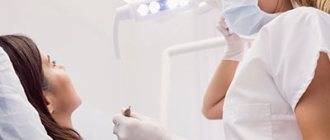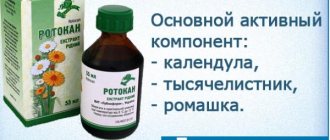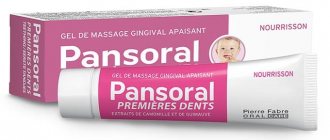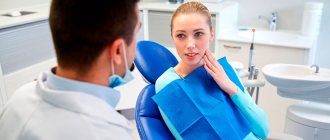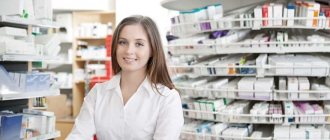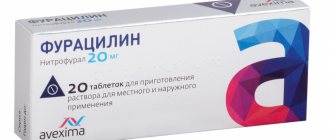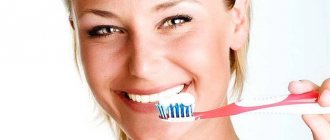Chlorhexidine is an effective antiseptic drug used in traditional medicine. It is used in gynecology, dermatology, and also in dentistry to combat various types of bacteria. Available in solution form, Chlorhexidine is often used for gum inflammation.
How to rinse your mouth with Chlorhexidine for gum inflammation
What is Chlorhexidine used for?
An aqueous solution is prescribed to be taken in the following cases:
- cervical erosion;
- for the prevention of syphilis, genital herpes and other vaginal diseases;
- disinfection of dentures, disinfection of wounds;
- various diseases of the oral cavity.
An alcohol solution is used to treat hands and medical devices before surgery. The solution is also used to treat the working surface of medical equipment.
Vaginal suppositories are effective for the following conditions:
- in order to prevent infections that can be transmitted as a result of unprotected sexual intercourse;
- bacterial vaginosis;
- prevention of inflammation and infections before surgery, childbirth or abortion.
Characteristics of the product
"Chlorhexidine" by its nature is a universal antiseptic. It was first synthesized at the beginning of the last century in Great Britain. From then to the present, it has been the leading disinfectant for the external treatment of skin, as well as medical instruments. Widely used in surgical practice. In addition to being an independent drug, it is part of many medications - antiseptic, promoting skin regeneration, etc.
"Chlorhexidine bigluconate" is produced by dozens of Russian enterprises alone. In fact, there is no difference in their products. The product differs only in its concentration. In this format it can be presented in five variations:
- 0,05 %.
- 0,2 %.
- 0,5 %.
- 1 %.
- 5 %.
What do these numbers mean? For example, 100 ml of a “Chlorhexidine” solution of five percent concentration (5%) contains 5 ml of the active substance.
The composition of Chlorhexidine preparations is identical. These are just two elements:
- Purified drinking water.
- Ingredient: chlorhexidine bigluconate.
Release form: solution in vials (plastic, glass) of various volumes. The most common containers in pharmacies are 100-500 ml containers. Bottles with a volume of 2 liters or more are produced especially for medical institutions.
How is Chlorgesidine used? What is it used for? The scope of its application is wide. If you purchase the drug specifically for rinsing, then it is better to stop at a solution of 0.05% concentration.
How to use Chlorhexidine in gynecology
The product is actively used to prevent sexually transmitted diseases. No later than 2 hours after unprotected intercourse, you need to take the solution. Men will need to insert 2 ml into the urinary canal, and women will need to insert 2 ml into the urinary canal and another 5-7 ml into the vagina. It is recommended to wipe the skin around the genitals with the solution. The instructions say that after using the drug you need to wait 2 hours before urinating. Otherwise, the effect of use will be less.
For preventive purposes, vaginal suppositories can be used.
Before using the product for thrush and other gynecological pathologies, you should consult a specialist in advance.
pharmachologic effect
The active substance chlorhexidine destroys the bacterial lash, which leads to its gradual destruction. It is not able to cope with viruses , so dentists do not prescribe it for viral infections, with the exception of herpes.
The product has good resistance to environmental factors. After rinsing, the film remains on the mucous membranes for several hours, which is necessary to treat the disease. It is good if, before rinsing, the patient warms up the liquid a little, as this increases the antiseptic intensity. The effect persists even in a purulent environment and blood admixture.
- The benefits and harms of rinsing the mouth with sunflower oil
The use of chlorhexidine has a beneficial effect on the restoration of the body's protective cells. Chlorhexidine copes with inflammatory processes, reduces hyperemia, swelling, and promotes the regeneration of mucous tissues.
Contraindications and adverse reactions
Taking the drug is contraindicated in the following cases:
- increased susceptibility to the components included in the composition;
- patients with dermatitis;
- simultaneous use with other antiseptics, for example, hydrogen peroxide;
- in ophthalmology for washing the eyes.
It is better to refrain from using the product to disinfect the surgical field before or after surgery on the central nervous system and auditory canal.
In pediatrics, the drug is used with great caution.
Some patients may experience undesirable reactions such as:
- dry skin;
- allergic skin rashes;
- itching of the skin;
- light sensitivity.
With prolonged use of the product in dentistry, changes in taste may occur, tartar may appear, or teeth may become stained.
What to do if the drug is accidentally swallowed?
During the procedure, it is necessary to avoid getting Chlorhexidine into the stomach, but if this happens, there is no need to panic. The need to take any measures depends on the amount of the drug that enters the stomach. If the volume does not exceed one sip, you can do nothing, but at the same time carefully monitor how you feel.
- What medicine is put into the hole after tooth extraction?
If pain or cramping occurs in the abdomen, it is necessary to rinse the stomach with warm soda or saline solution, and then take any sorbent drug, for example:
- "Neosmectin";
- "Smectu";
- "Filtrum-sti";
- Activated carbon;
- "Polysorb".
Activated carbon
The same steps must be performed if the amount of medicine swallowed is more than 10 ml. If you feel unwell, have intestinal or stomach cramps or signs of intoxication, you should consult a doctor.
"Chlorhexidine" is one of the most famous and affordable antiseptics used in dental practice. It allows for disinfection of the oral cavity after surgery and prevents pathogenic bacteria from entering the socket of the extracted tooth. If you use Chlorhexidine according to the regimen prescribed by your doctor, you can avoid serious complications, for example, purulent-infectious lesions of the periosteum or alveolitis. During use, it is important to follow the precautions described in the official instructions for the drug.
Rinse instructions for children
Parents now know how to dilute Chlorhexidine to rinse their child. Then it is important to follow a certain sequence of actions for greater effectiveness of the procedure:
- Do I need to dilute Chlorhexidine for rinsing? If this is a ready-made 0.05% solution, then no. If the drug is of higher concentration, then it is diluted with water in the proportions indicated above.
- Pour out 15 ml of solution. For convenience, you can use a measuring cup. A tablespoon can replace it if you know its volume.
- The child should gargle with the product by tilting his head back slightly and looking upward. While exhaling, he pronounces any vowel sound. Be sure to show your child how this is done. If the baby is too small, then it is better to refuse rinsing - he can easily choke.
- The procedure, as for adults, lasts 30 seconds.
- The solution must be spit out completely.
After the procedure, it is not recommended to drink or eat for two hours. It is best to rinse in the morning after breakfast and before going to bed in the evening.
Conditions for effective treatment
Effective treatment for oral thrush involves eliminating the underlying cause. It is very important to sanitize the oral cavity: cure teeth destroyed by caries, remove non-viable teeth and roots that can no longer be restored. These are chronic foci of inflammation, so simultaneous sanitation will shorten the treatment time. Tartar and plaque should also be removed. This is especially true for cases of candidal stomatitis associated with injury to the gums by the sharp edges of hard dental deposits.
Patients with removable dentures should be re-trained in hygiene and disinfection of orthopedic structures. If the time to use a prosthesis comes to an end, it is important to replace it in a timely manner. Treatment of candidiasis will be useless if a person uses the denture incorrectly and again creates conditions in the oral cavity for the growth of fungi.
Unsuitable crowns, bridges and other structures must also be replaced. It is also important to eliminate chipped enamel, which becomes a source of injury to the gums, mucous membranes of the cheeks and tongue.
Smokers should reduce their smoking episodes if possible or quit the bad habit. If the disease has developed while taking corticosteroids, it is important to explain the rules of treatment: you should rinse the mouth with plenty of warm water after spraying the drug.
When treating oral candidiasis that has developed during antibacterial therapy, measures should be taken to restore the normal microflora of the intestine and oral cavity. You may need to consult another specialist or therapist: you will need to take probiotics and prebiotics.
For all patients treated for candidiasis, several general recommendations apply:
- maintaining oral hygiene;
- refusal of foods rich in carbohydrates;
- giving up sugary drinks.
It is necessary to exclude from the diet foods that can irritate the mucous membranes: dishes prepared with vinegar, marinades, spicy, peppery foods, smoked foods, sour fruits and berries. You should also not eat confectionery, baked goods made with yeast, or sugar. It is better to give preference to warm dishes. You need to follow this diet for another 1.5-2 months after recovery.
In some cases, it is advisable to use toothpastes with glucose oxidase, lysozyme, and lactoferrin. They help improve the defenses of the oral mucosa and can be part of a comprehensive prevention of inflammation. The choice of toothpaste should be agreed with your doctor; he will recommend the optimal product, and also tell you which brush is suitable.
A complete overview of the useful product: scope, rules of use and main indications
Even simple tooth extraction inevitably leads to tissue trauma. Therefore, after the procedure, it is very important to follow the doctor’s recommendations to prevent infection of the open wound, inflammation of surrounding tissues and the development of other complications. One of the main aspects of prevention during the rehabilitation period is maintaining hygiene with regular antiseptic treatment of the oral cavity. For this purpose, specialists usually prescribe antibacterial solutions for rinses and mouth baths, for example, Chlorhexidine. Further in the article, read about the indications for use of the product, its pros and cons, precautions, as well as how to properly rinse your mouth with Chlorhexidine after tooth extraction.
Mouth rinse
Chlorhexidine solution is effective not only for curing diseases affecting the oropharynx. It is also used for therapy and prevention of infectious diseases of the gums and oral cavity. This is a good antiseptic and wound healing agent after surgical operations in this location. The procedure will significantly improve a person’s condition with infectious lesions of the oral mucosa - gingivitis, stomatitis, etc.
Moreover, rinsing the mouth with Chlorhexidine is also very useful for throat diseases. After all, a huge number of bacteria enter the pharynx from the oral cavity.
How to dilute Chlorhexidine for mouth rinse? In the same proportions as for the throat. The optimal concentration would be 0.05%. However, if the procedure does not bring the desired effect, then when rinsing the mouth, you can increase the concentration of the solution to 0.2%.
How to dilute Chlorhexidine to rinse gums? The instructions for the procedure will be similar to those described above.
Are rinses allowed for pregnant women?
Pregnancy is not a contraindication for using Chlorhexidine solution when gargling. This substance is not absorbed by the mother's mucous membranes.
Accidental ingestion of the solution by a woman is not dangerous for the fetus. Systemic absorption in this case will be so small that it will not have a negative effect on the child.
Release forms
“Chlorhexidine” for sore throat is not only a base for preparing a solution for rinsing. The same component can be found in other effective products. These drugs can be prescribed not only for acute viral and respiratory diseases:
- Dental gels. These are “Metrogil”, “Metrodent”, “Denta” and so on.
- Sprays and tablets indicated for diseases of the nasopharynx and throat - “Drill”, “Anti-angin”, “Sebidin”, etc.
- Cream preparations used for wound healing - Pantoderm, Depanthenol.
- Corticosteroid anti-inflammatory gels. For example, "Bemilon".
- Sprays and gels with a mild analgesic effect - “Lidocaine”, “Instillagel”, etc.
